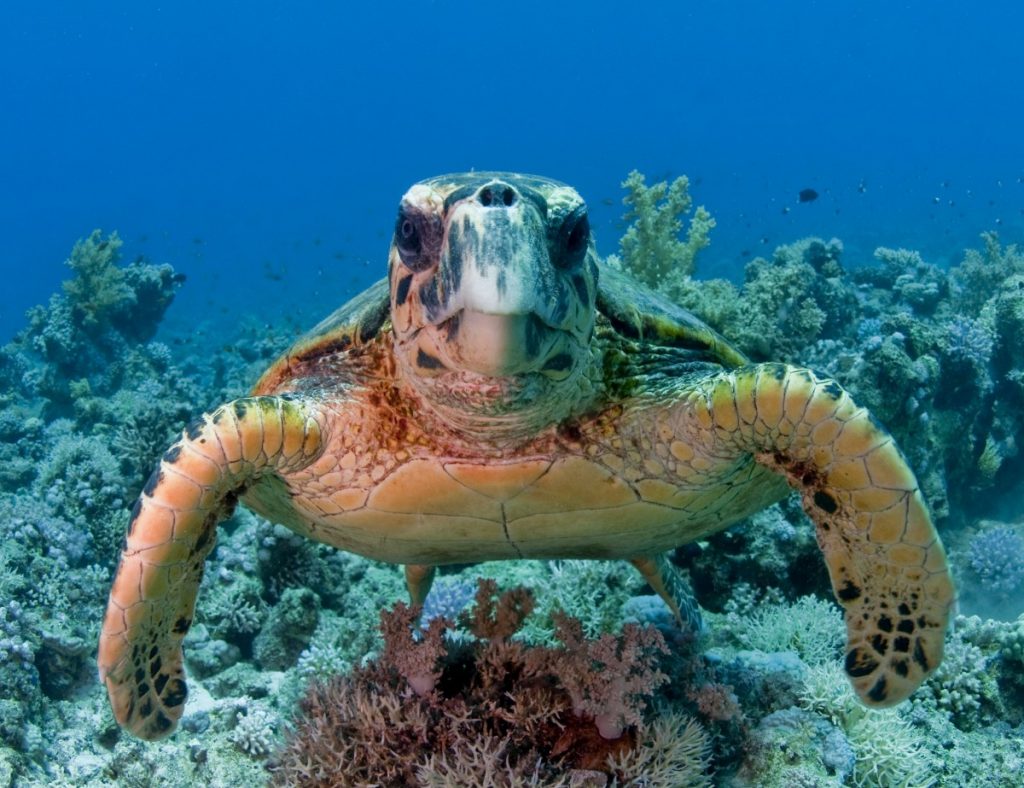In the Red Sea we have a few air breathing animals that dive and can hold their breath for fairly long periods of time. All the dolphin and turtle species and some migratory birds like cormorants, for example can do this.
So how are they able hold their breath for so many minutes without losing consciousness or dying? First, let’s revise some other physiological principles in order to understand more clearly what is happening.
The need to breath is felt when the carbon dioxide (CO2) level rises above a certain threshold. The CO2 will dissolve in the blood causing its pH to decrease, which is making the blood slightly more acidic. The sensors in the medulla oblongata (the base of the brain) will then “tell” the animal that it is time to breath again.
Oxygen (O2) and CO2 are carried around the body by the blood in two different ways. One is simply the fact that both O2 and CO2 can dissolve in the blood. This will account for a small fraction of the whole transportation process. The other method uses the haemoglobin, a protein present inside red blood cells. Both O2 and CO2 molecules have the ability to attach themselves to the haemoglobin, but the carbon dioxide has a much greater affinity to do this. Therefore, whilst haemoglobin can carry up to four molecules of O2 it carries a much larger amount of carbon dioxide, normally about 23 percent is transported in the blood. However. The main point is that in most animals the O2 reserve is solely in the lungs and the blood. Once this reserve is depleted, the animals will need to breathe again to exhale CO2 and inhale new O2.
Breath holding diving animals have the advantage of an additional mechanism which, relies on another very similar protein called myoglobin. This protein is located inside muscle cells. In humans it makes up for only a very small percentage of the muscle mass. This percentage changes drastically in the animals with the need to hold their breath and it goes up to 45% of the muscle mass in sperm whales, animals that can hold their breath for up to two hours.
How does it work? Simply the blood will carry O2 to the tissues and the extra oxygen that is not used “immediately” will be stored in the myoglobin more or less in the same way as in the haemoglobin. Once the animal is under water and can no longer breath, the O2 stock of the blood will become depleted, the myoglobin will then release its O2 in to the blood that will carry it around where it is needed. At the same time the myoglobin will “catch” the excess CO2 in the blood restoring to a level that does not trigger the need to breath. When eventually the animal returns to the surface to breath air, the myoglobin releases all of its stored CO2 and replaces it with fresh O2. The amount of myoglobin present in the animal muscles will determine the maximum time the animal can spend underwater.
The more the animal wants to stay under water, the longer the period it has to stay at the surface for the gas exchanges to take place. A dolphin needs to breathe a few times (about two to four minutes) to stay submerged 20 to 30 minutes. A sperm whale will breathe 4 or 5 times per minute for up to 15 minutes at the surface to stay two hours under water. Sea birds normally dive for 3 to 10 minutes according to the species they belong to and need to breathe for about 2 to 3 minutes before diving.
This article by Daniele Zanoni was originally published in 2009.

